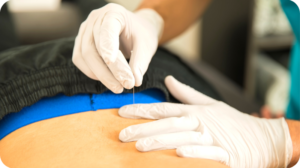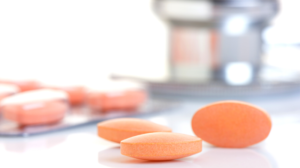You may think of yoga as primarily a stretching exercise, but its benefits extend far beyond that. In fact, studies show the right yoga regimen may help breathing and lung function, offering promise to asthmatics and others with breathing difficulties and even lung and cardiopulmonary diseases.

This shouldn’t come as a surprise. Controlled breathing, and different types of breathwork, are integral to most forms of yoga. Those practices exercise specific muscles that aid in efficient inhalation and exhalation, offering benefits even after a yoga session.
Yogic breathwork can be slowed and controlled to accommodate even severely impacted patients. Whether you’re struggling with periodic asthma, COPD, or diminished lung capacity due to a disease such as cancer, you can find a yoga style and breathwork ideal for you.
Best Yoga Breathing for Lung Issues
The best place to start in making yoga work for you and your particular lung issues is by enlisting the help of an accomplished yoga teacher. Experienced teachers have many poses in their toolbox, including a range of exercises meant to expand the thoracic cavity and strengthen the core and diaphragm—your primary breathing muscle. Yoga instructors are also trained to accommodate practitioners of differing physical ability levels and ensure that students do not over exert themselves. Here are three of the best poses to do—in a class or at home—to improve lung function.
- Cobra. Lie on your stomach with your legs straight. Slowly raise your torso up using your arms. It’s okay if you can’t straighten your arms all the way. Hold for 5-10 seconds x 3 reps. This pose opens the chest allowing more space for lungs to expand, and strengthens the core to stabilizing inhale and exhale actions.
- Cat-Cow. Position yourself on all fours. Slowly and steadily pull in your core and hunch your back like a Halloween cat. Your head should come down and your eyes should be looking at your legs or torso. Hold for a pause at the top of the arch, then slowly reverse the movement to drop your abdomen toward the floor and create a dip in your back, with your head pulled up to look almost at the ceiling. The second motion opens your chest and spreads out the diaphragm, toning it and making more supple so that you can take deeper, richer breaths with less effort.
- Camel (or Modified Camel). This can be a challenging pose; don’t perform it if it takes you to the edge or your comfort zone or if it causes you pain. Kneel on both knees with your back straight, and your toes bent into the yoga mat. Slowly lean back while reaching back with your arms to steady yourself with your fingers on your calves. Slowly lean until your back is arched back and you’re staring upward with your hands holding your ankles. If the full pose is too much, you can put your hands on your hips and lean back as much as you feel comfortable doing. In any case, the pose will open the thoracic cavity allowing for greater expansion of the diaphragm and lungs, and a greater volume of air intake. Try 10 seconds x 1.
Depending on the type of yoga you’re doing, the routine may include focused breathwork, like the “breath of fire.” Many yoga breathing techniques can, in and of themselves, increase lung capacity and suppleness.
Regardless, always consult your primary care professional before starting a new yoga practice, or attempting any individual poses. Do not attempt these poses if you have hip, knee, or wrist issues. Be careful not to overexert during yoga activities; you should never be out of breath.





